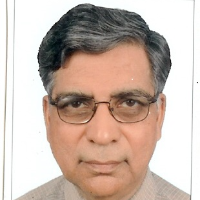
Sharda University, India
Title : Role of Artificial Intelligence & Remote Sensing (AIRS) in Correlational Studies of the Climate Chan
Abstract:
This study endeavors to apply Artificial Intelligence and Remote Sensing (AIRS) to compute the distribution, size, intensity, lifetime, and trajectories of the ‘SMONEX’ clusters of South and Southeast Asia (0-30N and 70-120E) and relates their distribution to synoptic-scale weather disturbances resulting the climate change. Defense Meteorological Satellite Program (DMSP) infrared (night) and visible (day) pictures for June, July, and August 1979 were used at the University of Wisconsin. The first GARP Global Experiment (FGGE) Level III-b data was used to examine the association of cluster activity to synoptic-scale systems. Satellite nephanalysis was employed to diagnose the Cloud Cluster characteristics from the DMSP imagery by using the techniques described by Martin, Sikdar, and Schreiner in the past. Due to different meteorological situations and terrain, the study domain has been defined into four Zones, A-D (Arabian Sea, Indian Peninsula, Bay of Bengal, and the South China Sea) – and three latitudinal belts (I=0-10N, II=0-20N and III = 20-30N) deg.] It was found that the lifetime of cloud clusters was more than a day (31 h) and it increased in size and intensity. The ‘intense’ and very large clusters were found to be related to monsoon depressions. The maximum cluster frequency according to size and intensity occurred between 50 – 200N and to the East of 850E longitude. This favorable area for cloud cluster activity may be due to the prevailing high sea surface temperatures (SST) and cyclogenetic nature of the region. The oceanic clusters were more active than those over the land. The cluster activity was significantly greater at 12 GMT than at 00 GMT during the S MONEX. The intense clusters generally moved in the west[1]north-west direction, with an average speed of 2.11 deg./day. Comparative studies showed that SMONEX clusters were slower in movement but of a longer lifetime than GATE clusters.] Next, the efforts are on to extend the above investigations over the other regions of SE-Asian in aforesaid domains (A-Arabian Sea, B- Indian Peninsula, C-Bay of Bengal, and theD- South China Sea) to develop first the Correlation of Climate Change with Monsoon Depressions Models , and later to develop ‘Numerical Climate Prediction Model’ (NCPM) by developing a very fine (1deg–1deg) grid nests moving with individual Monsoon Depressions within the regional model, having a coupling capability for these nests in space & time mode, by making use of Artificial intelligence to study deep Seas and High-Resolution Satellite imageries, data access, assimilation; HPC and cloud computing for real-time analysis.
Biography:
Dr. Virendra Goswami worked at Space Science Engineering Centre, NASA NOAA (National Oceanic Atmospheric Administration) at the University of Wisconsin, USA. Former Vice-Chancellor: Sangam & Sunrise Universities. Had been, Director General of Management Institutes and director of Engineering Institutes as well as Vice-President of Havells India Ltd. Special Invitee by the World Meteorological Organization (WMO) of the United Nations, Geneva in 2001. Expert Panelist of Association of Indian Universities (AIU) & Ph. D & M. Tech Examiner at Centre of Energy Studies at IIT Delhi. More than 44 years of teaching, research, and administrative experience at Home and Abroad. Also, Member: American Geophysical Union) SCB, AMS & IMS. Lately, appointed Reviewer /Member of the Editorial Board of the Royal Meteorological Society (R. Met. S), Atmospheric Science Letters (R. Met. SAL) as well as Prof.Emeritus: GNEC-Maulana Azad Medical College, Sharda University, Greater Noida, and RVIT, India.
